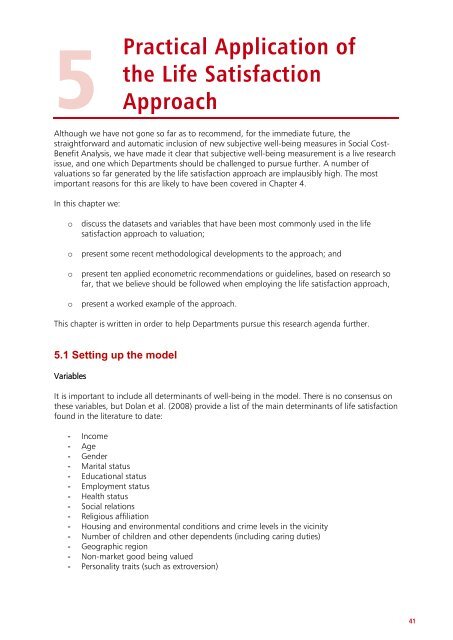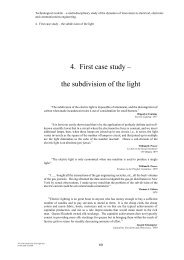Valuation Techniques for Social Cost-Benefit Analysis: - HM Treasury
Valuation Techniques for Social Cost-Benefit Analysis: - HM Treasury
Valuation Techniques for Social Cost-Benefit Analysis: - HM Treasury
Create successful ePaper yourself
Turn your PDF publications into a flip-book with our unique Google optimized e-Paper software.
5<br />
Practical Application of<br />
the Life Satisfaction<br />
Approach<br />
Although we have not gone so far as to recommend, <strong>for</strong> the immediate future, the<br />
straight<strong>for</strong>ward and automatic inclusion of new subjective well-being measures in <strong>Social</strong> <strong>Cost</strong>-<br />
<strong>Benefit</strong> <strong>Analysis</strong>, we have made it clear that subjective well-being measurement is a live research<br />
issue, and one which Departments should be challenged to pursue further. A number of<br />
valuations so far generated by the life satisfaction approach are implausibly high. The most<br />
important reasons <strong>for</strong> this are likely to have been covered in Chapter 4.<br />
In this chapter we:<br />
o discuss the datasets and variables that have been most commonly used in the life<br />
satisfaction approach to valuation;<br />
o present some recent methodological developments to the approach; and<br />
o present ten applied econometric recommendations or guidelines, based on research so<br />
far, that we believe should be followed when employing the life satisfaction approach,<br />
o present a worked example of the approach.<br />
This chapter is written in order to help Departments pursue this research agenda further.<br />
5.1 Setting up the model<br />
Variables<br />
It is important to include all determinants of well-being in the model. There is no consensus on<br />
these variables, but Dolan et al. (2008) provide a list of the main determinants of life satisfaction<br />
found in the literature to date:<br />
- Income<br />
- Age<br />
- Gender<br />
- Marital status<br />
- Educational status<br />
- Employment status<br />
- Health status<br />
- <strong>Social</strong> relations<br />
- Religious affiliation<br />
- Housing and environmental conditions and crime levels in the vicinity<br />
- Number of children and other dependents (including caring duties)<br />
- Geographic region<br />
- Non-market good being valued<br />
- Personality traits (such as extroversion)<br />
41





![AIRTO [Professor Dr Brian Blunden] - HM Treasury](https://img.yumpu.com/15492848/1/184x260/airto-professor-dr-brian-blunden-hm-treasury.jpg?quality=85)










